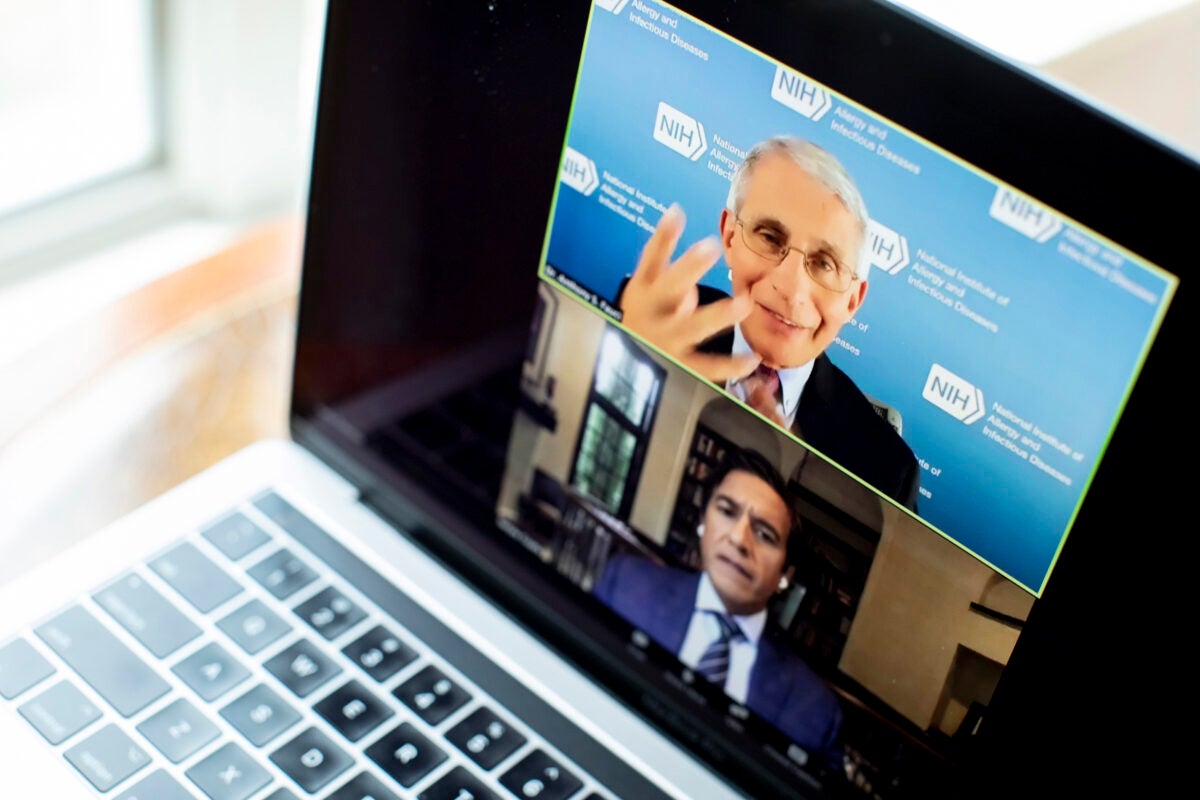Health
Missing teens where they are
Analysts highlight a school-sized gap in mental health screening
Hao Yu.
Stephanie Mitchell/Harvard Staff Photographer
As anxiety and depression persist at alarming rates among U.S. teens, less than a third of the nation’s public schools conduct mental health screenings, and a significant number of those that do say it’s hard to meet students’ needs, according to a new survey of principals.
With staffing that includes counselors and nurses, public schools are uniquely positioned to help address the youth mental health crisis declared in 2021 by the U.S. surgeon general, according to Harvard Medical School’s Hao Yu, a co-author of the study.
“Child mental health is a severe public health issue in this country,” he said. “Even before COVID, about a quarter of children had different degrees of mental health problems, and during the pandemic the problem just got worse.”
The study, published last month in JAMA Network Open, is the first since 2016 to poll public school principals on children’s mental health, said Yu, an associate professor of population medicine. The intervening years have included COVID-related disruptions, growing worries about screen time, and a surge of artificial intelligence in everyday life, he noted.
$1B
Cut from previously approved federal funding for school mental health support
One positive finding from the survey, which was funded with a grant from the National Institute of Mental Health, is that the percentage of U.S. public schools that screen for mental health issues has risen significantly in the past nine years, albeit from just 13 percent to 30.5 percent. The survey asked 1,019 principals three questions: Do you screen for student mental health issues? What steps are taken for students identified with anxiety or depression, two of the most common youth mental health issues? And how easy or hard it is to find adequate mental health care for students who need it?
The responses show that the most common step taken for students struggling with anxiety or depression is to notify parents — almost 80 percent of schools did that. Seventy-two percent offer in-person treatment, while about half refer to an outside mental health provider. Less than 20 percent offer telehealth treatment.
Responses to the final question highlight the challenge facing those seeking to address the problem, with 41 percent describing the task of getting care as “hard” or “very hard,” a result that Yu said, while concerning, isn’t surprising given the nationwide shortage of mental health providers.
The survey, conducted with colleagues from the Medical School, the nonpartisan research organization RAND, Brigham and Women’s Hospital, the University of Pittsburgh, the Harvard Pilgrim Health Care Institute, and Brown University, also showed that school-based screening programs are concentrated in larger schools, with 450 students or more, and in districts with larger populations of racial and ethnic minority students.
Helping young people overcome mental health challenges is a multistep process, Yu said.
“We need to make child psychiatry an attractive profession and we need to train more mid-level providers — social workers, school nurses, and counselors — because those middle-level providers play an important gatekeeper role, helping identify children with mental health problems and helping children and their families get into the healthcare system,” he said.
It’s also important, Yu said, to get policy right at all levels of government. For example, he said, even though it’s clear that meeting the challenge will require more resources, the federal government recently slashed $1 billion in previously approved school mental health funding. A potentially positive development, he said, is the nationwide trend toward restrictions on smartphone use.
“I don’t think any other institution can replace the schools in identifying and treating child mental health problems,” Yu said. “If mental health problems are treated, their severity can be greatly reduced. Mental health problems not treated in childhood can have a long-lasting effect into adulthood. That’s not an optimal situation for our society.”














